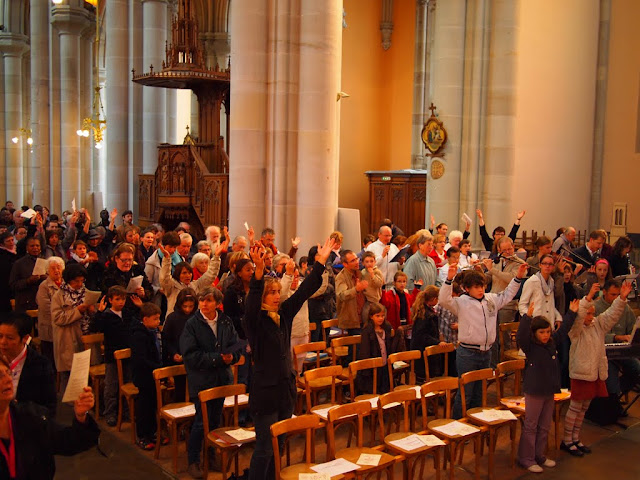In the fourth part of our presentation of Don Pietro Leone's "The Roman Rite: Old and New", the author continues his analysis of the several problematic aspects of the theology of the New Mass, as compared with the Traditional Rite. Are there deficiencies in the way the New Mass presents the Real Presence, the Ministerial Priesthood, and the very ends of the sacramental sacrifice?
________________________________
We now proceed to compare certain general features of the Mass in the Old and the New Rites.
 3. The Real Presence
3. The Real Presence
We have already quoted the Council of Trent to the effect that Christ Himself is offered in the Mass. In the 4th canon of the 13th Session, the doctrine of the Real Presence is expressed in the clearest terms: “If any-one were to deny that in the Most Holy Sacrament of the Eucharist is contained truly, really, and substantially the body and blood together with the soul and divinity of Our Lord Jesus Christ and therefore the whole Christ; but were to say that he is present in it only as a sign, a figure, or a power: Anathema sit [1]”.
In the Old Rite this dogma is expressed clearly in the text of the Mass by phrases such as that which follows the consecration: “… the pure Victim, the holy Victim, the immaculate Victim, the Holy Bread of eternal life and Chalice of everlasting salvation[2].”
Respect for the Real Presence is expressed by the many genuflections, the purification of the celebrant’s fingers in the chalice, the avoidance of contact with any profane object before they are purified, the purification of the sacred vessels on the corporal immediately after their use, the use of a pall to protect the chalice, the internal gilding of the vessels, the consecration of the immobile altar, the use of the pietra sacra and relics in the mobile altar and on the mensa when the Mass is said in a sacred place, of three altar-cloths, the reception of Holy Communion and the thanksgiving while kneeling (as opposed to the former standing and the latter sitting), the reception of Holy Communion on the tongue, the prescriptions in the case of a consecrated host falling to the ground, the prohibition that faithful and mass-servers touch the sacred vessels (see Critical Study IV 2).
The Reformer Martin Bucer, mentor of Thomas Cranmer, expressed the Protestant consensus as to the Real Presence (to which only Luther did not subscribe in virtue of his doctrine of consubstantiation) in his Censura when he said: “It becomes our duty to abolish from the churches… with all purity of doctrine whatever forms of bread-worship they wish to have employed by the anti-Christs and preserved in the hearts of the simpler kind of people” (MD p. 463).



























